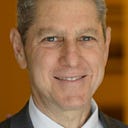what does it mean to ask ‘who am i?’
Vic Shayne
author
13 Pillars of Enlightenment: How to realize your true nature and end suffering
Who am I?
In consideration of how to move past the sense of self — the “me” — let’s take a moment to explore whether it is possible to arrive upon something that is not constructed out of thought. Something not of this world, so to speak. Not in this world but the source of this world.
Is it possible to be completely free of the egoic self and experience endless bliss? Or is the idea of bliss just a trick of the mind or wishful thinking? And why do gurus of Advaita-Vedanta and other mystic sects recommend asking yourself who you are for you to find the truth of what you are? What does this accomplish? This approach of self-enquiry offers a lot of insight into what we are, but is self-enquiry really necessary, or is the practice of self-enquiry just an example of the ego chasing its own self, fooling itself to believe that it has moved past itself?
The above questions are quite pertinent to uncover the truth of what you are, because they force you to take a bold and raw assessment of what the egoic mind is and how it places itself at the center of its world and even creating the delusion that it is enlightened.
how does ‘who am i?’ work?
For thousands of years enlightened teachers have been trying to find a way to guide interested seekers to realize what they are beyond the self. One of these ways is by asking the simple question “Who am I?” But what does this question do, what does it mean, and how does it work? And is it a simple question or a koan?
For one thing, it’s not enough to just go around repeating, “Who am I? Who am I?” This thought, formed as a question, is a tool instead of a question to be answered. And, paradoxically, it can only be answered once the questioner has realized that there is no questioner.
The question “Who am I?” creates a rift, a very slight crack in the egoic mind’s perception. It does this because the question forces the mind to turn around and perceive the seer instead of just the seen, which are two fragments of the same thing. When most people go through their lives they are so involved in acting as the character called “me,” which is the self, that they do not realize that they are so deeply immersed in an illusory world of their own making that they cannot easily escape.
The question “Who am I?” pulls the attention toward the seer; it makes us aware of the seer, the observer.
what is beyond the self?
When one becomes aware of oneself as the observer over months or years, then one may begin (there is no guarantee, of course) to notice that there is a void out of which life (including the seer) emanates, and this void is an empty capacity for all that is known within the void. In Taoist philosophy this has been called “the empty vessel,” which is the one and only capacity for all that mysteriously arises out of it.
a change in identification
When the mind gets used to the recognition of the emptiness-fullness then it identifies as the void that is behind, or prior to, life, phenomena, thoughts, experiences, actions, memories, imaginings, etc. This means that the mind eventually realizes that it is the capacity, and not the body or sense of self, that are but fragments within the capacity. The world of thought gives way to pure existence.
Asking “Who am I?” starts the process of uncovering the emptiness, which we may also call the capacity, all-ness, Absolute, or void. But it is not God as is so often described. God, which seems to be a metaphor for consciousness, is what emanates from the void and is not the void itself.
point at yourself
Most often when a person is told to look at herself, which is to ask “Who am I?,” she does so intellectually, meaning that the egoic mind tries to provide an answer and make sense of the question. But here’s the rub: It is only when the question leads to no answer at all that the ego has moved out of the way to observe what you are NOT.
“Realisation is not acquisition of anything new nor is it a new faculty.
It is only removal of all camouflage”
― Ramana Maharshi
When we seek to find out what we are we must come to realize what we are not.
It is easy to point to all sorts of objects — chairs, people, ducks, park benches, clouds, and rocks, for example — and say what they are, because they are expressions of consciousness that reside in the world that seems to be “out there.” But when you point to yourself, which is what the question “Who am I?” is doing, then, aside from the bodily form and thoughts, a totally clear mind will discover that there is nothing definable, explainable, bounded, or impermanent about what you are.
